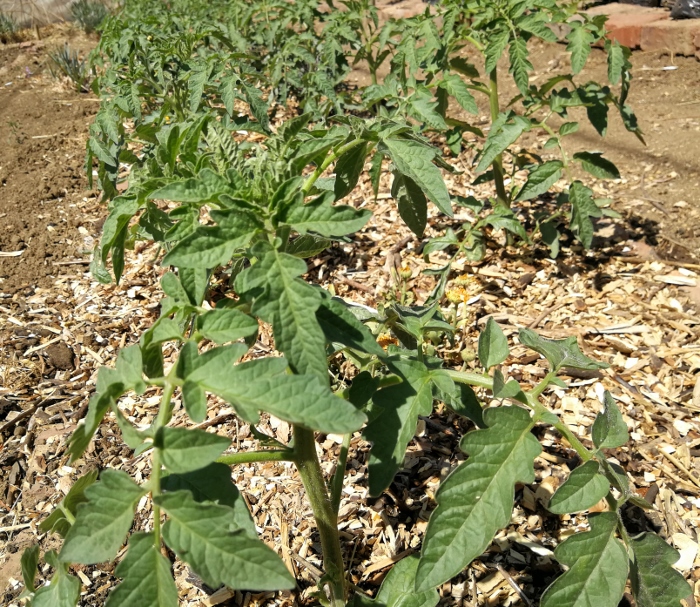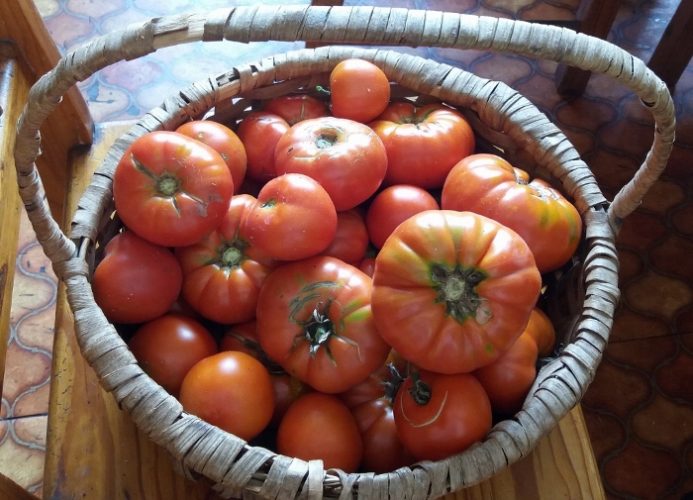During this series we will be looking at growing tomatoes, as well as other members of the nightshade family of vegetables. These include tomatoes, potatoes, peppers, aubergine (eggplants/brinjals), paprika and certain chillis.
Tomatoes are popular summer vegetable all over the world and come in a very wide variety. They range from large Omar’s Lebanese heirlooms to small cherry tomatoes. There are even different colours. Apart from various shades of the traditional red, you can also grow yellow and even black tomatoes.
You can plant tomatoes from August to December. If you are in a hot area you can plant later, especially if you are frost free. In the Lowveld you can plant as late as February to May.

You can plant seeds directly or you can plant seeds in protected trays and plant out seedlings later.
Plant in full sun, in rich well-drained soil. Dig in good compost when preparing the soil and you can also add bone-meal.
Avoid growing tomatoes near potatoes, rosemary or brassicas such as cabbages.
Spacing varies according to the varietal. The range is 300 mm to 500 mm between plants. It is recommended that there be 1.8 to 2.5 meters between rows.
If you are planting commercially planting can vary from 8 000 to 35 000 plants per Ha, depending on your area and the varietals.
There are also two types of growth habits amongst tomatoes. Determinate (bush) tomato plants are bred to stop growing usually somewhere around 1m tall. The tomatoes tend to ripen all at once. The fruit appears at the ends of the branches.
Indeterminate tomatoes continue to grow for what seems like indefinitely. Depending on the variety, they can grow 6m tall. They keep on bearing fruit until temperatures drop too low or they have a disease.
Watering
The frequency of watering depends on the soil type, temperature and the stage of growth of the plant. It is better to water on the ground, as aerial irrigation often lead to fungal leaf diseases.
In general, the root system can be compared to the aerial growth of the plant. The roots spread into the soil at a similar rate to which the aerial growth develops. Most tomato roots occur in the top 500-600 mm of soil level, even at maturity.
Watering will depend on your climate and temperatures, but these are rough guidelines. During the first four weeks, 21mm of water per week is needed; for the following eight weeks 38mm/week, and for the remainder of the growing season, 31mm/week. Too much water after the fruit has formed can cause them to crack
Feeding
Different growth stages require different nutrients. For the first five weeks, vegetative growth occurs with high Nitrogen requirements. In weeks 6-12, the flowering stage requires with high Potassium. During the final 12-20 weeks, the fruit set and fill stage needs high Calcium, Magnesium.
This is part one of a series on growing vegetables from the Nightshade Family.
Part Two: Tomato Pruning and Trellising
Part Three: Tomato Diseases and Pests
Part Four: Growing Potatoes
Part Five: Potato Diseases and Pests
Part Six: Growing Peppers
Part Seven: Growing Aubergine
Part Eight: How To Preserve Your Nightshade Harvest
If you enjoyed this article, subscribe to receive more like this.

